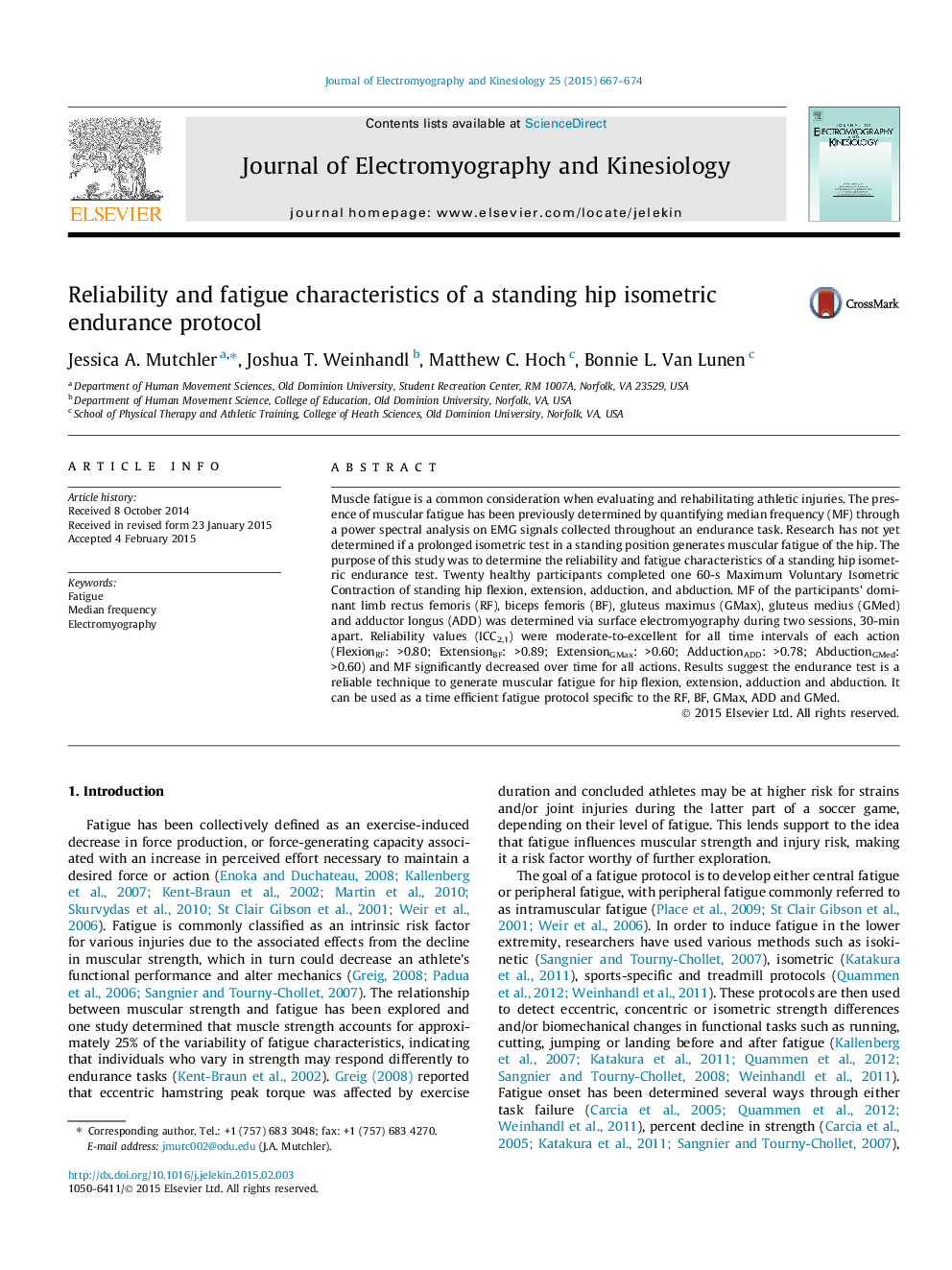| Article ID | Journal | Published Year | Pages | File Type |
|---|---|---|---|---|
| 4064592 | Journal of Electromyography and Kinesiology | 2015 | 8 Pages |
Muscle fatigue is a common consideration when evaluating and rehabilitating athletic injuries. The presence of muscular fatigue has been previously determined by quantifying median frequency (MF) through a power spectral analysis on EMG signals collected throughout an endurance task. Research has not yet determined if a prolonged isometric test in a standing position generates muscular fatigue of the hip. The purpose of this study was to determine the reliability and fatigue characteristics of a standing hip isometric endurance test. Twenty healthy participants completed one 60-s Maximum Voluntary Isometric Contraction of standing hip flexion, extension, adduction, and abduction. MF of the participants’ dominant limb rectus femoris (RF), biceps femoris (BF), gluteus maximus (GMax), gluteus medius (GMed) and adductor longus (ADD) was determined via surface electromyography during two sessions, 30-min apart. Reliability values (ICC2,1) were moderate-to-excellent for all time intervals of each action (FlexionRF: >0.80; ExtensionBF: >0.89; ExtensionGMax: >0.60; AdductionADD: >0.78; AbductionGMed: >0.60) and MF significantly decreased over time for all actions. Results suggest the endurance test is a reliable technique to generate muscular fatigue for hip flexion, extension, adduction and abduction. It can be used as a time efficient fatigue protocol specific to the RF, BF, GMax, ADD and GMed.
